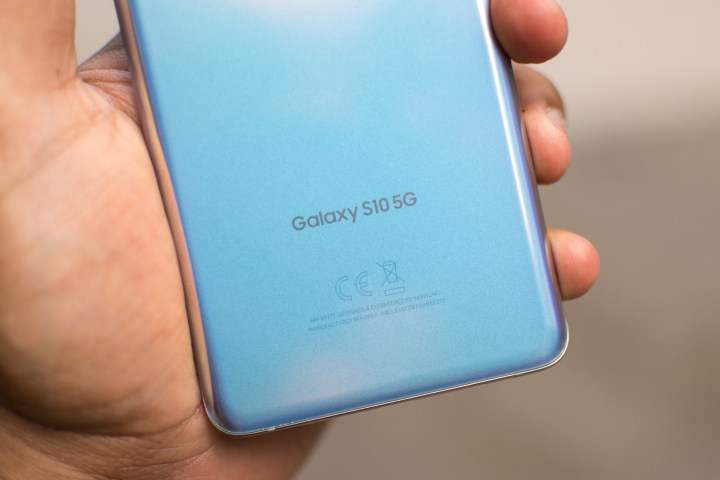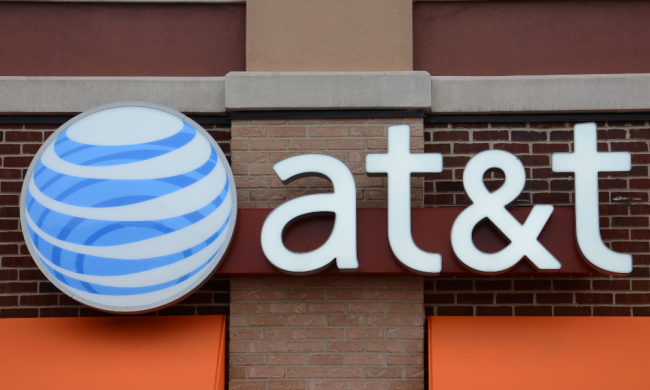
As promised, 2019 has brought the first live 5G networks, and with those networks, the first 5G phones. For the most data-hungry among us, this is an exciting moment: Download speeds are already several times faster, even in these early days. We’ve tested 5G in several locales — for Verizon’s network, we traveled to Chicago (twice); for T-Mobile, we walked the streets of New York City. We even flew to Dallas to test Sprint’s 5G network.
You’d think we’d be able to use a single 5G phone in all our tests, right? One like the Samsung Galaxy S10 5G, which is sold by all four major carriers? Wrong. Unfortunately, the software inside the S10 5G is optimized for each specific carrier — enough so that you’d need to fork over another $1,300 and get a new S10 5G if you switched carriers. It’s why there is currently no unlocked version of the phone from Samsung.
There’s a good chance most 5G phones will be locked down to a single carrier, at least for the next year or two. Here’s why.
(Before you read on, we highly recommend you read our primer on 5G as well as a guide on all the spectrum variants here in the U.S. as it will help you understand some of the terms we’ll use.)
This Has All Happened Before
What we want to stress here is how differently each carrier is handling 5G, specifically with the frequencies and technologies in use. There’s one important point to realize before you blame the carriers for just hoisting their proprietary methods on us: With each switch to a new generation of wireless technologies, there’s always a period of incompatibility, and possibly a bit of self-interest at work.
With 2G, it was the switch from analog to digital wireless signals, 3G the split between CDMA and GSM, and while 4G primarily uses a single technology, the frequencies used by the various carriers are different. 5G is shaping up to be an issue of both technology and frequency, but this is nothing the wireless industry hasn’t been through before. Rather, it’s the price of early adoption.
Who’s Using What
Each carrier’s strategy for 5G varies considerably, at least in the early stages of rollout. Here’s what spectrum they are utilizing:
- Verizon: Primarily mmWave, using its 28GHz spectrum and limiting it to urban areas. The carrier’s 4G network remains the primary vehicle for higher speed connections outside of big cities. Mid and low-band spectrum will provide 5G to rural areas, but not for many years.
- AT&T: Also primarily mmWave using the 39GHz spectrum, and it’s limited to urban areas. Like Verizon’s network, the 5G service piggybacks AT&T’s 4G network, so you’d always be connected to 4G in case you move out of range of a 5G node.
- T-Mobile: While it’s using some mmWave, most of the deployment will use T-Mobile’s vast amounts of acquired 600MHz low-band spectrum. While not as fast as Verizon or AT&T’s 5G network, it’s likely T-Mobile’s strategy will cover more ground, and at a faster rate.
- Sprint: Sprint is in the process of merging with T-Mobile, but it already has launched its 5G service with at 2.5GHz (or “mid-band” or “Sub-6”) spectrum. While it might be slightly faster than T-Mobile’s low-band 5G service, it will be less reliable than LTE, especially inside buildings.
While there are some similarities, for the most part, each carrier’s strategy is quite different. This poses a challenge to both device manufacturers and chipmakers.
One Size Doesn’t Fit All, For Now
Chipmakers like Qualcomm say they are ready for multi-carrier support, but deferred questions on why manufacturers, and in turn the carriers, are selling locked-down 5G phones. Qualcomm says its 5G modems are able to support all the “key spectrum bands” (most commonly used) from sub-6GHz right up through mmWave. Its X50 5G modem does just that, and it’s in many 5G devices like the Galaxy S10 5G and the LG V50 ThinQ.
But the X50 doesn’t support all planned 5G spectrum. T-Mobile’s 600MHz spectrum requires phones with the X55 5G modem, which Qualcomm announced earlier this year. T-Mobile is planning on launching its 600MHz 5G network this fall, and no phones support it just yet.
- 1. Samsung Galaxy S10 5G
- 2. LG V50 ThinQ 5G
Qualcomm is the only chipmaker able to offer such wide support for 5G. Others instead build their radios to specific 5G setups. With that being the case, it’s no wonder why some phones are only compatible with a single carrier and might continue to be in the near future. But even in the case of Qualcomm radio-equipped phones, they still can be hobbled by manufacturers, whether by request of the carrier or by choice.
“It’s really up to the [manufacturer] on what they implement in the phone,” a Qualcomm spokesperson told Digital Trends, directing us to the manufacturers instead.
Manufacturers we talked to acknowledge the current situation when it comes to 5G phones. Most optimize the phone’s software for each specific carrier — like the Samsung Galaxy S10 5G — which currently has a version for each of the four major U.S. carriers.
That particular phone uses Qualcomm’s Snapdragon 855 processor and the X50 5G modem, giving it broad 5G support. In theory, this phone would already be able to support multiple carriers already on a single phone, but the software is customized to prevent exactly this. The LG V50 ThinQ uses the same chipset and again suffers from the same software-based lockdown. The V50 or S10 5G sold by Verizon cannot connect to Sprint’s 5G network. The lack of 5G phone interoperability is increasingly looking like it rests on the carriers.
We attempted to get an answer from the carriers, but none responded to our query.
Right now, if you buy a phone from a carrier, there’s a good chance you can easily take it to another carrier that supports it. At the moment, this is not possible with 5G, and that’s a problem.
It Might Be Better to Wait
Even if the technology exists to make cross-carrier 5G phones, 5G is so new that most carriers likely want manufacturers to lock down their phones for now. There’s a simple selfish reason for this: Network investment.
Carriers are spending billions of dollars to build out their 5G networks, and they want to recoup their investments. No manufacturer we talked to mentioned any kind of technological roadblocks to making this happen. This means down the road, and likely in the not too distant future, we will see unlocked 5G phones.
Also, with 5G in its early stages, it’s not 100% clear which technologies and spectrum will work best. Chipmakers and manufacturers are still waiting on carriers to settle on their final spectrum plans, which still remain in flux. So, unless you have an extra $1,000-plus to part with, your best bet, for now, might be to wait.




